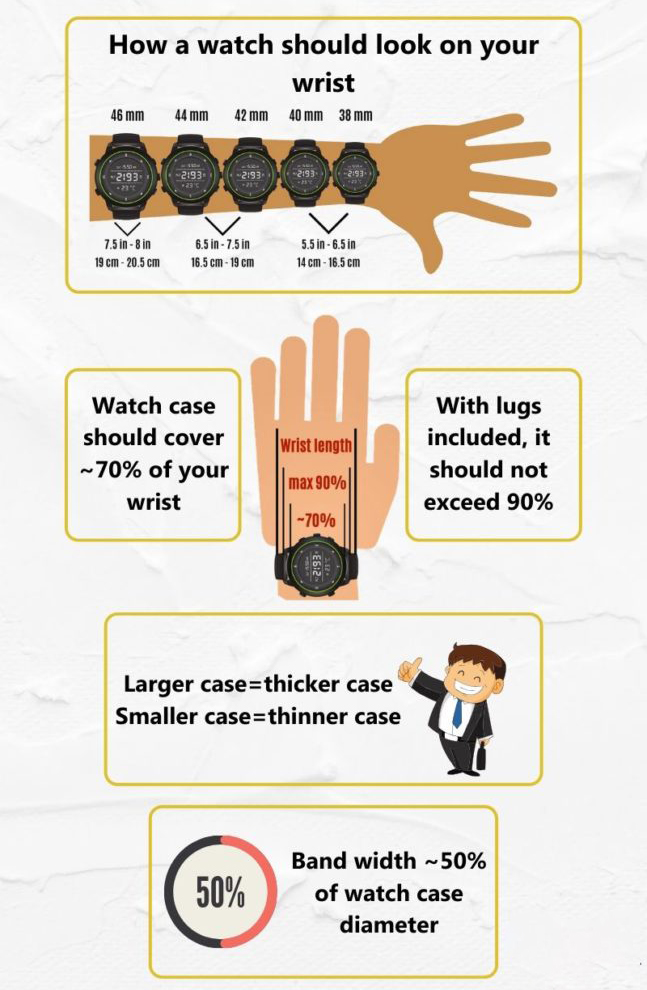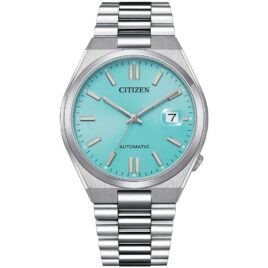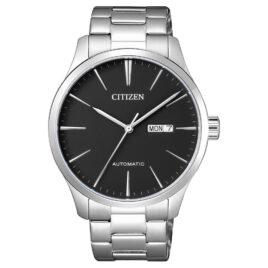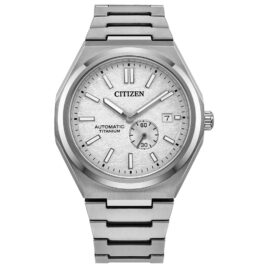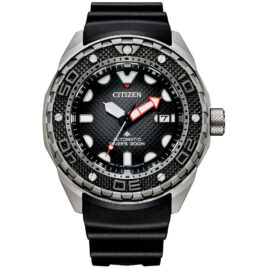Description
CITIZEN Mechanical NJ0100-71E Specifications
| Feature |
| ||
|---|---|---|---|
| Driving system | Automatic | ||
| Caliber Number | 8210 | ||
| Case material | Stainless steel | ||
| Case back | See-through | ||
| Band type | Bracelet | ||
| Band material | Stainless steel | ||
| Band color | Silver tone | ||
| Band width | 22 mm | ||
| Clasp | Fold over with push button | ||
| Dial color | Black textured with steel colored line indices | ||
| Glass material | Mineral crystal | ||
| Hands | Silver tone hour, minute, second hand | ||
| Dial markers | Silver tone batons indexes with double | ||
| Second markers | Minutes markers around the outer rim | ||
| Bezel | Fixed silver tone stainless steel | ||
| Crown | Screw down at 3 o’clock position | ||
| Calendar | Date display at 3 o’clock position | ||
| Vibration | 21,600 vibrations per hour (6 beats per second) | ||
| Drive duration | Power reserve approximately 40 hours | ||
| Water resistance | 10 bar water resistance (100 meters / 330 feet) | ||
| Size | Diameter 42 mm x Thickness 11.6 mm | ||
| Lug to lug | 46 mm | ||
| Weight | 152 g |
CITIZEN Mechanical NJ0100-71E Features
Casual sport meets classy elegance. New to the Automatic Collection, this vintage-inspired timepiece is built to be passed down for generations. This men’s watch features a brushed stainless-steel case and fold-over double-push closure bracelet, blue teaked dial, silver-tone markers and hands and water resistance of 100 meters.
- 21 jewels
- Date display
- Approximately 40 hours power reserve
About CITIZEN Mechanical NJ0100-71E
History of Citizen
The company was founded in 1930 by Japanese and Swiss investors. It took over Shokosha Watch Research Institute (founded in 1918) and some facilities of the assembly plant opened in Yokohama in 1912 by the Swiss watchmaker Rodolphe Schmid.
The brand Citizen was first registered in Switzerland by Schmid in 1918 for watches he sold in Japan. The development of this brand was supported in the 1920s by Count Gotō Shinpei with his hope that watches could become affordable to the general public. The growth of Citizen until World War II relied on technology transfer from Switzerland.








